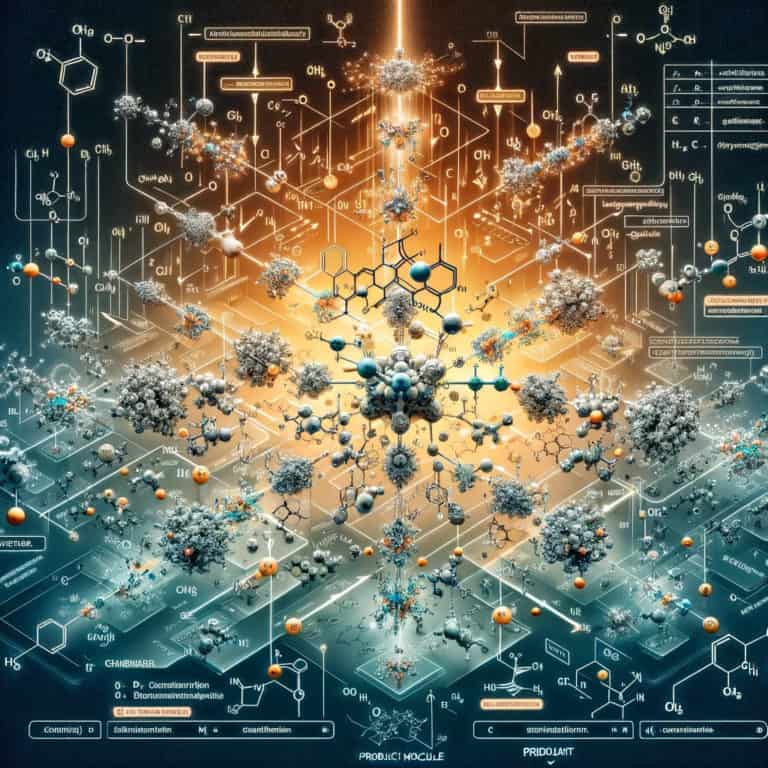Advancing Biofuel Production: Chemical Innovations and Challenges
This review investigates catalytic techniques and conversion technologies in chemical processes involved in the generation of biofuel. It tackles present issues and future directions of research to improve biofuel economy and sustainability.

Introduction to Biofuels
A major part of the renewable energy sector, biofuels offer a sustainable substitute for conventional fuels. Usually depending on the biomass source used for manufacturing, they fall into three generations. Commonly utilized as food, organic materials such as sorghum and corn form first-generation biofuels. Second-generation biofuels come from non-food sources like municipal trash, energy crops, and agricultural wastes. Mostly generated from algae, third-generation biofuels are Aboytes–Ojeda et al., 2016.
Biofuels are important because, when used as a low-carbon substitute for fossil fuels in the transportation sector, they help to lower greenhouse gas emissions and thereby address climate change (Jeswani et al., 2020). Factors include the growing need for renewable energy sources, worries about greenhouse gas emissions, and the need to lessen reliance on fossil fuels for economic development are driving the growing usage of biofuels (Roy et al., 2012; Sedghamiz, n.d.; Saragih, 2023).
Mostly generated from biological elements like plants, animals, trash, and microorganisms (Datta et al., 2019), biofuels are Along with fuel like ethanol, the generation of biofuels produces coproducts including lignin and its derivatives (Ceylan et al, 2010). Modern techniques for the synthesis of biofuels often use modified microorganisms to break down cellulose and translate it into biofuel (Harrison & Dunlop, 2012).
Investigating biofuels also includes biofuel cells, in which biocatalysts are used to reduce oxygen or peroxide at the cathode and catalyze the oxidation of fuels at the anode (Minteer, 2010). With an eye on producing sustainable energy from renewable biofuels, enzymatic biofuel cells have attracted a lot of attention (Campbell et al., 2015). With low energy density biofuels like ethanol, glycerol, and carbohydrates offering environmentally-friendly energy solutions, biofuel cells have several possible uses (Majdecka et al., 2015).
Ultimately, the change toward a more sustainable energy future depends critically on biofuels. Their importance in the scene of renewable energy is shown by their division into several generations depending on biomass sources, together with their environmental advantages and possibility to lower greenhouse gas emissions.
Chemical Processes in Biofuel Production
Both biochemical and thermochemical conversion techniques—each with unique traits and needs—are used in the generation of biofuels. Biocatalysts including enzymes and microbial cells are used in biochemical conversion coupled with heat and chemicals to transform biomass into an intermediary mixed sugar stream, which is subsequently further processed to generate biofuels like ethanol. Foust & colleagues (2009). Usually, this procedure consists in lignocellulosic biomass enzymatic hydrolysis followed by component sugar separation for fermentation (Bernardi et al., 2014). In biochemical conversion, catalysts are absolutely important since they help to break down complicated biomass components into simpler sugars fit for fermentation (Rehman et al., 2021).
Conversely, thermochemical conversion uses techniques like gasification followed by Fischer-Tropsch synthesis whereby all biomass components can theoretically be transformed into biofuels (Sohel & Jack, 2012). Thermochemical techniques have a well-known capacity to effectively turn a variety of biomass feedstocks into biofuels. Thermochemical techniques like hydrothermal liquefaction, for example, allow algal biomass to be transformed into biofuels, providing fast and reasonably priced manufacturing paths (Vaniyankandy et al., 2022). In thermochemical conversion, catalysts are also crucial since they enable the pyrolysis and catalytic hydrotreating (Wang et al., 2016) processes to convert biomass into biofuels.
Important catalysts utilized in the manufacturing of biofuel are nanomaterial-based catalysts that improve the biomass conversion process efficiency (Rehman et al., 2021). Furthermore, in both biochemical and thermochemical conversion paths to efficiently breakdown lignocellulosic biomass, the choice of suitable pretreatment techniques is vital (Chaturvedi & Verma, 2013). By making biomass more flexible for later conversion techniques, pretreatment of biomass helps to increase general biofuel yields.
Ultimately, effective biomass conversion into biofuels depends on particular catalysts and chemical reactions in the biochemical and thermochemical conversion processes in biofuel generation. Although thermochemical processes like gasification and pyrolyze provide other paths for biofuel generation from many biomass materials, biochemical techniques concentrate on enzymatic hydrolyzed and fermentation.
Challenges and Future Perspectives
The present technical and financial difficulties in the generation of biofuels cover a spectrum of problems that must be resolved if this industry is to grow steadily. Technical difficulties include optimizing conversion methods, including thermochemical and biological approaches, to improve yield and efficiency. Often involving the creation of new catalysts and the enhancement of pretreatment techniques for different biomass feedstocks, these difficulties Cheah et al. (2020)Yu & Chen, 2017; Cantarella, 2023 A major technical challenge in the generation of biofuels is also the necessity to improve microbial metabolic pathways and raise host cell tolerance to biofuels (Adewuyi, 2022).
Economically, feedstock supply and pricing provide difficulties that can affect the general viability and competitiveness of biofuels against conventional fossil fuels (Arya et al., 2021). Important economic issues that must be addressed to guarantee the economic sustainability of biofuel generation are the optimization of operating parameters and the evaluation of overall production costs (Cantarella, 2023). Further complicating the economic scene of biofuel production are difficulties with market dynamics, regulatory initiatives, and sustainability issues in underdeveloped nations (Rathore et al., 2016).
Research and technology future directions for biofuel development center on creatively overcoming these issues. Key areas of research that hold great potential to enhance biofuel production processes are nanotechnology applications in biofuel generation, developments in metabolic engineering, and the creation of sustainable feedstock sources (N Nguyen, 2024; Adewuyi, 2022; Zaimes et al., 2015). Moreover, the combination of artificial intelligence and machine learning in renewable energy systems—including chains of biofuel suppliers—opens chances to maximize operations and minimize environmental effects. Overcoming technological, financial, social, and environmental issues in the biofuel sector depends on cooperative efforts to build sustainable biofuel processes and supply chains.
In essence, even if biofuels present a sustainable substitute for conventional fossil fuels, their general acceptance depends on addressing present technical and financial obstacles. Future research directions emphasizing technological innovation, economic feasibility, and sustainability will be very important in improving biofuel generating techniques and pushing the change toward a more sustainable energy future.
References
Aboytes–Ojeda, M., Castillo-Villar, K., Yu, T., Boyer, C., English, B., Larson, J., … & Labbé, N. (2016). A principal component analysis in switchgrass chemical composition. Energies, 9(11), 913. https://doi.org/10.3390/en9110913
Campbell, A., Jeong, Y., Geier, S., Koepsel, R., Russell, A., & Islam, M. (2015). Membrane/mediator-free rechargeable enzymatic biofuel cell utilizing graphene/single-wall carbon nanotube cogel electrodes. Acs Applied Materials & Interfaces, 7(7), 4056-4065. https://doi.org/10.1021/am507801x
Ceylan, H., Gopalakrishnan, K., & Kim, S. (2010). Soil stabilization with bioenergy coproduct. Transportation Research Record Journal of the Transportation Research Board, 2186(1), 130-137. https://doi.org/10.3141/2186-14
Datta, A., Hossain, A., & Roy, S. (2019). An overview on biofuels and their advantages and disadvantages. Asian Journal of Chemistry, 31(8), 1851-1858. https://doi.org/10.14233/ajchem.2019.22098
Harrison, M. and Dunlop, M. (2012). Synthetic feedback loop model for increasing microbial biofuel production using a biosensor. Frontiers in Microbiology, 3. https://doi.org/10.3389/fmicb.2012.00360
Jeswani, H., Chilvers, A., & Azapagic, A. (2020). Environmental sustainability of biofuels: a review. Proceedings of the Royal Society a Mathematical Physical and Engineering Sciences, 476(2243). https://doi.org/10.1098/rspa.2020.0351
Majdecka, D., Dramińska, S., Stolarczyk, K., Kizling, M., Krysiński, P., Golimowski, J., … & Bilewicz, R. (2015). Sandwich biobattery with enzymatic cathode and zinc anode integrated with sensor. Journal of the Electrochemical Society, 162(6), F555-F559. https://doi.org/10.1149/2.0731506jes
Minteer, S. (2010). Biofuel cells, enzyme catalysis of oils., 1-5. https://doi.org/10.1002/9780470054581.eib088
Roy, P., Tokuyasu, K., Orikasa, T., Nakamura, N., & Shiina, T. (2012). A review of life cycle assessment (lca) of bioethanol from lignocellulosic biomass. Japan Agricultural Research Quarterly Jarq, 46(1), 41-57. https://doi.org/10.6090/jarq.46.41
Saragih, Y. (2023). Effect of thermal overload relay (tor) as overheating protection on bsr-10 type biofuel pelletizer molding machine. International Journal of Educational Research & Social Sciences, 4(3), 554-561. https://doi.org/10.51601/ijersc.v4i3.670
Sedghamiz, M. Site selection for commercial biofuel production from algae and sugarcane, using gis modeling in queensland, australia.. https://doi.org/10.14264/uql.2017.915
Bernardi, R., Cann, I., & Schulten, K. (2014). Molecular dynamics study of enhanced man5b enzymatic activity. Biotechnology for Biofuels, 7(1). https://doi.org/10.1186/1754-6834-7-83
Chaturvedi, V. and Verma, P. (2013). An overview of key pretreatment processes employed for bioconversion of lignocellulosic biomass into biofuels and value added products. 3 Biotech, 3(5), 415-431. https://doi.org/10.1007/s13205-013-0167-8
Foust, T., Aden, A., Dutta, A., & Phillips, S. (2009). An economic and environmental comparison of a biochemical and a thermochemical lignocellulosic ethanol conversion processes. Cellulose, 16(4), 547-565. https://doi.org/10.1007/s10570-009-9317-x
Rehman, A., Noor, T., Hussain, A., Iqbal, N., & Jahan, Z. (2021). Role of catalysis in biofuels production process – a review. Chembioeng Reviews, 8(5), 417-438. https://doi.org/10.1002/cben.202000040
Sohel, M. and Jack, M. (2012). Thermodynamic analysis of a high-yield biochemical process for biofuel production. Bioresource Technology, 124, 406-412. https://doi.org/10.1016/j.biortech.2012.08.058
Vaniyankandy, A., Ray, B., Karthikeyan, S., & Rakesh, S. (2022). Thermochemical conversion of algal based biorefinery for biofuel.. https://doi.org/10.5772/intechopen.106357
Wang, H., Elliott, D., French, R., Deutch, S., & Iisa, K. (2016). Biomass conversion to produce hydrocarbon liquid fuel via hot-vapor filtered fast pyrolysis and catalytic hydrotreating. Journal of Visualized Experiments, (118). https://doi.org/10.3791/54088
Adewuyi, A. (2022). Underutilized lignocellulosic waste as sources of feedstock for biofuel production in developing countries. Frontiers in Energy Research, 10. https://doi.org/10.3389/fenrg.2022.741570
Arya, I., Poona, A., Dikshit, P., Pandit, S., Kumar, J., Singh, H., … & Kumar, S. (2021). Current trends and future prospects of nanotechnology in biofuel production. Catalysts, 11(11), 1308. https://doi.org/10.3390/catal11111308
Cantarella, H. (2023). Biofuel technologies: lessons learned and pathways to decarbonization. GCB Bioenergy, 15(10), 1190-1203. https://doi.org/10.1111/gcbb.13091
Cheah, W., Sankaran, R., Show, P., Ibrahim, T., Chew, K., Culaba, A., … & Chang, J. (2020). Pretreatment methods for lignocellulosic biofuels production: current advances, challenges and future prospects. Biofuel Research Journal, 7(1), 1115-1127. https://doi.org/10.18331/brj2020.7.1.4
Nguyen, T. (2024). Harnessing a better future: exploring ai and ml applications in renewable energy. Joiv International Journal on Informatics Visualization, 8(1), 55. https://doi.org/10.62527/joiv.8.1.2637
Rathore, D., Nizami, A., Singh, A., & Pant, D. (2016). Key issues in estimating energy and greenhouse gas savings of biofuels: challenges and perspectives. Biofuel Research Journal, 3(2), 380-393. https://doi.org/10.18331/brj2016.3.2.3
Yu, P. and Chen, X. (2017). Enhancing microbial production of biofuels by expanding microbial metabolic pathways. Biotechnology and Applied Biochemistry, 64(5), 606-619. https://doi.org/10.1002/bab.1529
Zaimes, G., Vora, N., Chopra, S., Landis, A., & Khanna, V. (2015). Design of sustainable biofuel processes and supply chains: challenges and opportunities. Processes, 3(3), 634-663. https://doi.org/10.3390/pr3030634



